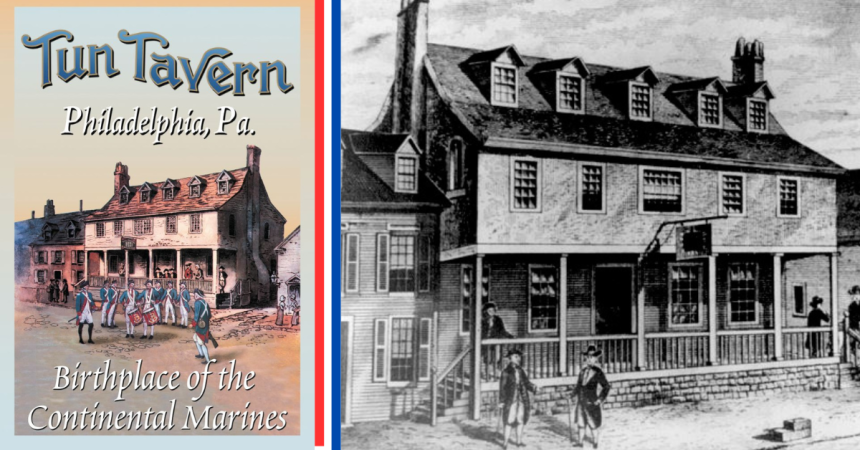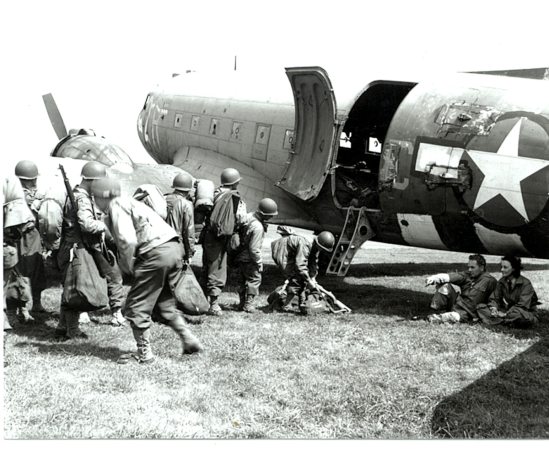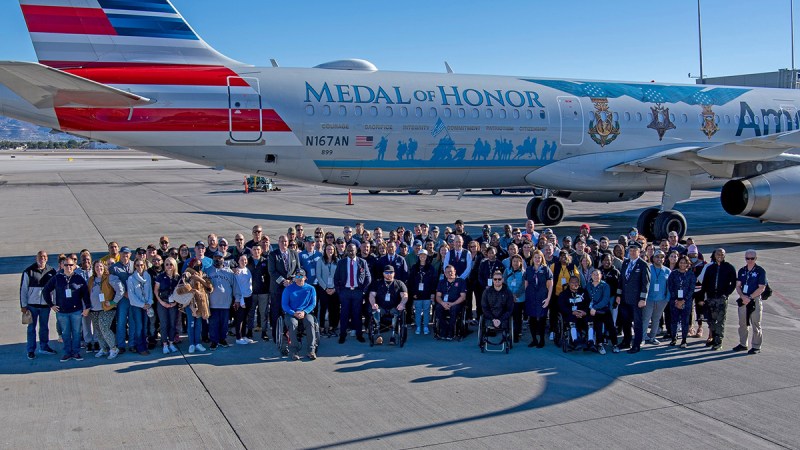As we commemorate the 80th anniversary of the Normandy Landings, we embark on a journey of remembrance and gratitude, honoring not only the gallant men who stormed the shores of France but also the resilient women who stood steadfast on American soil, sacrificing and rationing to support the war effort. The ingenuity of brides during World War II, who turned surplus parachute fabric into wedding gowns due to wartime rationing, has left an enduring legacy. As history often repeats itself, designers like Carolina Hernandez of Veteran Couture Art are now paying homage to this remarkable chapter by putting a contemporary twist on the tradition.
Rationing and Resourcefulness

The scarcity of fabric during WWII compelled brides across the country to find unconventional solutions for their wedding gowns. Rationing was a harsh reality, and brides had to make do with limited resources or go without the traditional materials for their dresses. Fortunately, surplus parachute fabric emerged as an unexpected but valuable resource, providing a solution to the challenge of finding suitable materials for wedding gowns.
During World War II, Americans on the home front faced unprecedented challenges as the nation mobilized its resources for the war effort. One of the most tangible expressions of this sacrifice was the implementation of rationing – a system that limited the consumption of essential goods to ensure they were available for the military and to support the overall war effort.
Rationing in the United States during WWII affected a wide range of goods, including food, gasoline, tires, clothing, and more. The government established the Office of Price Administration (OPA) to oversee rationing and manage the distribution of scarce resources. Each household received ration books containing coupons, and individuals could only purchase a limited quantity of certain items within their allotted ration.
Rationing extended beyond food and fuel to include various consumer goods. Clothing, shoes, and textiles were subject to restrictions, leading to a trend of mending and repurposing garments. Citizens became adept at making do with less, embracing a mindset of frugality and resourcefulness.

While the sacrifices imposed by rationing were challenging, many Americans rallied around the cause, viewing their personal contributions as vital to the war effort. Propaganda campaigns encouraged a sense of patriotism and unity, emphasizing that by accepting limitations, citizens were actively supporting the troops overseas.
After the war, rationing gradually eased, and the United States emerged as a global economic powerhouse. The experience of rationing left an indelible mark on the collective consciousness, shaping post-war consumer habits and attitudes toward resource conservation.
World War II brought unprecedented challenges to Americans on the home front, and rationing became a symbol of shared sacrifice. The resilience and adaptability displayed by citizens during this period underscored the nation’s commitment to supporting the war effort. As Americans rationed their daily lives, they contributed to the larger narrative of victory and endurance during one of the most transformative periods in history.
The legacy of rationing extended beyond its immediate impact on daily life, influencing unexpected facets of post-war society. As rationing gradually relaxed and the United States assumed a dominant position in the global economy, remnants of wartime resourcefulness persisted. One such example emerged in the realm of fashion, where surplus parachute fabric, salvaged by resourceful paratroopers, found new purpose in bridal couture. This symbiotic relationship between military surplus and civilian ingenuity highlighted the enduring effects of wartime collaboration and adaptation on the collective imagination.
Paratroopers: Unsung Heroes of Bridal Fashion

The stringent standards imposed on parachute makers during WWII created surplus fabric when parachutes were rejected for any reason. Recognizing the potential of this high-quality white nylon or silk, paratroopers played a pivotal role in contributing to the availability of surplus material. Saving their reserve chutes, paratroopers unknowingly became the unsung heroes of wartime bridal fashion, fostering a unique collaboration between the military and brides on the home front.
In the midst of wartime challenges, a young bride, like many others, discovered the possibilities within surplus parachute fabric. Through community initiatives and the support of paratroopers stationed nearby, she transformed discarded parachute material into a beautiful wedding gown. This tale reflects the resilience and creativity of a generation that faced adversity head-on, turning scarcity into an opportunity for innovation and unity.
Modern Couture: Carolina Hernandez and Parachute Camo

Carolina Hernandez, the visionary CEO and founder of “Veteran Couture,” epitomizes the intersection of creativity, heritage, and service. Drawing inspiration from her family’s rich sewing traditions in Mexico, Carolina embarked on a journey that seamlessly blended her passion for design with her military background. Armed with a Bachelor of Fine Arts degree in fashion design and a profound respect for veterans, she channels her experiences into breathtaking creations that transcend mere clothing. With a penchant for vibrant textures, intricate hand-sewn embellishments, and innovative fabric manipulation techniques, Carolina’s designs are a testament to her artistic prowess and unwavering commitment to excellence. Beyond the realm of fashion, Carolina’s dedication to community service shines brightly, as evidenced by her active involvement with veteran non-profit organizations and initiatives promoting women’s empowerment. As she prepares to embark on her latest endeavor, transforming WWII silk into a parachute wedding dress, Carolina continues to captivate hearts and minds with her boundless creativity and indomitable spirit.
Hernandez pays homage to the history of parachute wedding gowns by infusing a modern aesthetic into the tradition. Embracing parachute camo as a unique material, Hernandez creates wedding dresses that seamlessly blend the old and the new. Her designs not only showcase the timeless elegance of parachute fabric but also honor the resourceful spirit of WWII brides, bringing their legacy into the present.
The legacy of WWII parachute wedding gowns lives on not only as a testament to the resilience of brides during a challenging era but also as a source of inspiration for modern designers. Hernandez and others like her are breathing new life into this historical narrative, infusing it with contemporary flair and reminding us that even in fashion, innovation often arises from the unlikeliest of sources. The parachute wedding gown, once born out of necessity, now stands as an enduring symbol of creativity, resourcefulness, and the timeless elegance of wartime brides.










